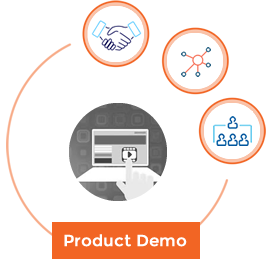Every business requires new business process improvement to evaluate and redesign their existing business procedures to increase and develop workflow efficiency and achieve productivity goals. If you’re using dated business processes and practices definitely going to stuck or struggle for further business progress.
Adapting to the evolution of technology in the working world can save you from being left behind the competitors. Implementing digital transformation in the business processes drives significant changes in business process improvement and implementation. Using a Quality Management System anyone can design and define business process improvement, implementation & integration easily and rapidly.
The best method to approach new business system implementation and integration is listed below.
Step 1: Create a Playbook
A business playbook describes the company’s complete processes, policies, and standard operating procedures. It also encloses how the business operates with the roles and responsibilities of each person in the organization. The playbook is a well-organized document that answers questions like what the company actually does, how, why, who does what, and when. Allows to leverage the skills of the team and meet their objectives.
For playbook creation,
- Collect voice of customers(VOC) interviews to know more about customer expectations and feedback on products or services.
- Define and document the information management expectations using digitized smart sheets.
- Organize the workstreams by defining and transiting the roles to drive the critical decisions.
- Prioritize your goals and tasks to create the action plans.
Step 2: Assess Behavior
Every business’s success lies in balancing the hard and soft skills of the team members. A well-defined business system should allow the team members to increase their strength and provide opportunities for continuous improvement.
To become a successful organization, follow the below formal approach to analysis and maintain cross-functional teams:
- Recognize and utilize each employee’s skills and interests.
- Determine roles and responsibilities of all team members in coordinating tasks to pursue long-term goal achievement.
- Create a transparent cross-functional administrational structure
Step 3: Create a Process Map
A process map is an integrated Quality Management System that helps for complete planning and management of the company’s workflow. It creates a framework of the business process that allows easy implementation. Involve complete team collaboratively to provide effective process map.
To drive a valuable process map for a new business operation implementation and integration, ask questions to get clarity and bridge the path to your end-user.
- Know your end customers’ expectations
- Understand your customers’ Needs
- Know your client’s priorities
Remove Inefficiencies, Redundancies, and Non-Value Added Text:
To avoid your business projects dragging again to a complexity problem, every company has to redesign their business processes methodically in a way to remove waste and inefficiency. Quality management system tool can allow you to perform this step effectively since it holds the complete alignment of all the integrated activities. It also helps to determine whether the target milestone is achieved to move next step in the business process.
Step 4: Execute Process Implementation and Integration
Implement your new business process system with suitable departments and their action plans, and also integrate the new business system with your current internal organizational system. Check the coordination flow between the team members by following the 4D decision-making model.
Define: Continual information sharing, ideas, and making decisions.
Data: Gather insights data and metrics that allow you to make decisions.
Decide: Verify decision as team head or leader.
Disseminate: Continual support on a decision by promoting and encouraging system adoption internally.
Most of the projects fail due to a lack of following decision-makers’ support at each phase. A Well-framed decision-making structure formed using a process mapping system tool prevents you from such failures.
Step 5 Filling Training Gaps
Create company training content based on the aligned applicable procedures, standards, guidance documents, manuals, and other relevant resources.
The training process should include:
- Creating guidelines should support the implementation process effectively.
- Create standardized training procedures and materials.
- Perfect training to the trainee with knowledge and skills required for their job role.
- Evaluate employee understandings through assessments.
Follow the training process for future employees to sustain continuous improvement in the business process.
Businesses following the above steps to implement and integrate new business systems will definitely achieve development in workflow and productivity goals. Aura Quality Management Software provides an effective integrated process planning, implementation, and integration tool to evaluate and redesign your business processes completely and rapidly. Get a free demo on our Aura QMS to know its complete features for your business support. Leave an enquiry on our website to know more about our software tool.





